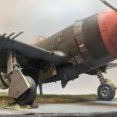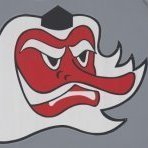Leaderboard
Popular Content
Showing content with the highest reputation on 07/18/2019 in Posts
-
Tempest Mk.V Special Hobby 1:32
chuck540z3 and 6 others reacted to Koralik for a topic
After a few models of heavily tired aircraft. This time the model of the aircraft without strong weathering. Tempest Mk.V Special Hobby 1:32 Scale The model is not very easy to build, so I don't recommend it to less experienced modelers.7 points -
Weekend trip to a tank museum "around the corner". lucky me that I also like Tanks. more pictures Link: King Tiger museum site Swiss Tank Museum6 points
-
Salute to Peter Castle (Airscale)
D.B. Andrus and 5 others reacted to dodgem37 for a topic
Although miscaptioned as a P-51, you'll recognize it as Peters' Mk XIVe. https://www.modelmotorcars.com/peter-castle-uk-1-18-scale-p51-mustang/ Sincerely, Mark6 points -
Latest completion is the Trumpeter 1/32 P-47N Thunderbolt "2 Big and To Heavy/Short Snorter" of 333rd FS/318th FG, April 1945, Le Shima, Ryukyu Islands. Used Zotz Decals, AMS Resin wheels, Master Model gun barrels and Eduard seat belts. Otherwise OOB. Jerry6 points
-
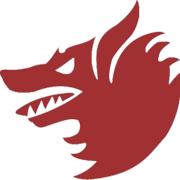
Spitfire MkVb to MkIX conversion 1/24 349 sqn
Starfighter and 4 others reacted to red Dog for a topic
Cockpit is very sparse from the box, so a bit of scratching is required... I'm not going into crazy detailling but just basic stuff Default offer: Some bits added And being painted .... More work required and i'll revert to the original radio channel selector (top right) which is too large. The Airfix kit part will be better. The airscale placards decals will come in handy5 points -
Maverick
Uncarina and 3 others reacted to Michael931080 for a topic
I Feel The Need, The Need For...………………………………….4 points -
Miniart has new kit in development 1/35 AVRO 671 ROTA MK.I RAF jan https://miniart-models.com/products/41008-avro-671-rota-mk-i-raf/4 points
-
DAYs 4-7 I have completed the interior and am now ready to close up the fuselage. As one would expect fit was excellent!! The seat was painted in artists oil paint to replicate the leather on the real item, Wingnuts belts were used. I have always used Wingnut belts on wingnut builds, I really like them and don't feel the need to use aftermarket items in this area. Next time I should be able to show you guys an airframe!! Thanks for stopping by.4 points
-
After 7 months of work, the Albatros D.Va (OAW) is finally complete...The build is based on the Wingnut Wings kit and finished as Hans Von Gössel's flying skull, circa mid 1918. The kit was extensively modified in order to make the small details more accurate. Additions were Bo Monroe's 3D printed wing radiator and Fuel tank, HGW Models textile harnesses and Yahu photoetch instruments. I completely scratchbuilt the air valve assembly behind the starboard instrument panel and linked the piping based on the NASM plans for the restored Albatros (the restoration book was of tremendous help with the plans and detail photos). The kit received a new windcreen made from thermoformed clear acetate to thin it to scale, and the coaming was modified to add wrinkles and retaining washers for the leather. Master brass jackets were used for the Spandaus. For the engine, i had run out of Taurus resin overhead cam so i just scratchbuilt the valve springs, the induction manifold was wrapped with teflon tape and the heat shields were made from lead sheet and MENG styrene bolts. Taurus resin spark plugs were used and everything wired using Modelkasten rubber thread. Rexx metal exhaust attached. The Niendorf propeller was my first hand carved propeller and i used different veneer sheets and then coated it with MR. Paint clear. The wooden fuselage is finished with Knotless decals from Uschi van der Rosten and a few filters. The decals are just flawless in their application and in the result you get. I initially had the rigging attachment points 3D designed and printed by my friend and ALM Studios team mate Imad Bouantoun, but they turned out too big due to their hollow nature and limitations on SLA printing so i ended up scratchbuilding those using styrene and thermoforming the domes with styrene sheet to be able to use the Gaspatch Models albatros specific turnbuckles. Rigging tubing is from Bob's Buckles and rigging is done with EZ-Line thin. The lozenge linen is Aviattic and is superb as are all the linen decal series from that manufacturer... Alot of additions and scratchbuilt items which would be too long for me to itemize here, or which i might have forgotten over the period of time since. The figure is to give a sense of scale and was painted by my friend and ALM Studios team mate Bernard Bassous. You can find all the juicy details in the build log . Id like to thank everyone who encouraged me to push the envelope so to speak. As i mentioned on the wip log, it looks like the stars were aligned for this one! Thanks again, Stay safe and happy modeling! Karim3 points
-
Hey Chris...I certainly will let you know if I need any information etc.....thank you very much! Just to let you know that my B17G was featured as a small back page article in the 447th BG Newsletter by Steve Heeb (Ol'scrapiron) Fozzy3 points
-

Proper Plane wooden propellers
LSP_Kevin and 2 others reacted to Proper Plane for a topic
Hi there! We are glad to show you our big Wolff. This propeller and hub set as a suitable replacement for the Wingnut Wings model of the LVG C.VI (32002 options B C E), DFW C.V (32040 A B D E), DFW C.V (32057 E) and any other aircraft installed with the Benz Bz.IV aeroengine. This propeller is now available for purchase in our web store.3 points -
AIMS 1/32 Pressurised 109 conversions
Fanes and 2 others reacted to Pastor John for a topic
Hi everyone, the extra Pe arrived a few days ago so sets are ready to sell. email me at aimsmodels1@gmail.com if interested. Thanks3 points -
AIMS W.Gr 21 rockets
Lud13 and 2 others reacted to Pastor John for a topic
Hi everyone, the PE has arrived and so I now have my own 1/32 W.Gr 21 rocket set - like I said before - wish I had done this from the start instead of using other peoples products. Anyway email me at aimsmodels1@gmail.com if interested. Price is £6.00 and they will also from now on be included in the 'Graf Special' conversion. Many thanks3 points -
Bf 109 G-10 Erla/type 110, Hasegawa 1/32
109 and 2 others reacted to French frog models for a topic
Here it is finally finished ... the paintings ak real are great to use ... a little rest and zou it will be necessary that I finish the other 109! A huge thank you to Vincent Kermorgan and jean-claude Mermet for their invaluable help! See more on my FB's page: https://www.facebook.com/125768474675320/posts/431152264136938/3 points -
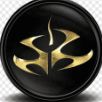
SB2C
scvrobeson and 2 others reacted to vince14 for a topic
Maybe you all got unlucky, then, but I found building the HPH Hornet no more difficult than any other resin or multi-media kit ¯\_(ツ)_/¯3 points -

SB2C
EvilCarrot and 2 others reacted to nmayhew for a topic
and yet Graham at Iconicair says exactly the opposite ie it doesn't necessarily *have* to be like this with resin kits.... I have read enough on here to know that irrespective of the subject, I would never touch a HPH resin kit; I'm not that good a modeller, and my life is too short and I have too many kits that I really want to build. I am open minded about HPH's foray into the injection moulded world, but am hoping for something better than Fly's Hurricane for instance (again, life too short etc etc).3 points -
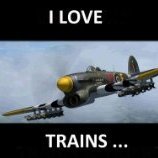
1/32 Kittyhawk F-84F Thunderstreak & RF-84F Thunderflash !
scvrobeson and 2 others reacted to KAGNEW for a topic
WE are back, later Kitty Hawk3 points -
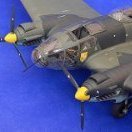
1/48th Boeing B-52H Stratofortress
JesniF-16 and 2 others reacted to tomprobert for a topic
The BUFF has had some more work done on the engines - I've sanded and shaped the home-made upper, over-wing parts of the pylons and all look good under some primer: DSC_0186 by Thomas Probert, on Flickr DSC_0187 by Thomas Probert, on Flickr DSC_0190 by Thomas Probert, on Flickr Shaping the pylons on the underside was a lot more tricky as they are all molded identical, but of course the inner pylons have a very different shape due to the change in shape as you travel down the length of the wing: DSC_0201 by Thomas Probert, on Flickr I've also finished detailing the rear of the bypass sections: DSC_0195 by Thomas Probert, on Flickr DSC_0199 by Thomas Probert, on Flickr It was a bit of a faff opening these up but worth the effort. And we now have something really taking on the form of the venerable BUFF: DSC_0205 by Thomas Probert, on Flickr DSC_0192 by Thomas Probert, on Flickr As you can see, however, the tail feathers are conspicuous by their absence... better get sanding! Until next time, Tom3 points -

Spitfire MkVb to MkIX conversion 1/24 349 sqn
Starfighter and 2 others reacted to red Dog for a topic
I though the above cartoon is pretty representative of what is to come The MkVb boxing provides the clipped wingtips and although Spit IX from the 349 had all sorts of different configurations during their activity, the one I am building has the clipped wings. So out with the saw and the default wingtips were cut. Fitting of the clipped wingtip is far from being a no putty operation, and curiously the parts fit better when I switched the parts number from the instructions. I also had to adapt the cut according to the aileron to ensure the wingtips were properly aligned with the trailing edge of the ailerons. The early clipped wings were done in wood and had no position lights - but PT723 clearly sports the light. Luckily, Airfix provided transparent parts for them. Fitting is not perfect either, but that can be very easily overcome. I'll attach them later on. The wing is now complete & ready for priming. Most of the panels were puttied, as were the clipped wingtips. The rivets were toned down by light sanding. Now I can really start this model by working on the cockpit3 points -
I've always been fascinated by the Korean War. It was a bloody conflict that in many ways was a precursor to Vietnam, where the majority of the folks in the US (unless they had a father, husband or son serving) paid little attention to it. This was in stark contrast to WW2 where the entire nation was involved and engaged in the war effort. Another interesting thing was that the equipment used was mix of cutting edge technology and WW2 leftovers. Specifically regarding WW2 leftovers, we have the F-51D Mustang. 5 years before, the Mustang was the F-22 Raptor of WW2. Arguably the best fighter of that war (especially when you factor it's amazing range into the equation), in Korea this thoroughbred was simply an expendable bomb truck. Many aircraft lost their puttied wings, which provided a few extra MPH due to laminar flow, many others lost even more performance when the USAF opted to lock it's tailwheel in the down position to reduce maintenance issues from mud and ice building up in the tail gear bay. In the end, performance no longer mattered and these once cutting-edge aircraft were simply fed into the operational squadrons, used until lost or scrapped and then replaced by others. The aircraft were no longer waxed and polished for maximum performance, instead, they were left outdoors in truly horrible weather conditions and apparently, little effort being made to clean them. Part of this was probably due to the tempo of missions. Instead of flying long range escort missions maybe once per week as they did in WW2, weather permitting, these Mustangs often flew 3-4 times per day. This tempo also took it's toll, Mustangs (and their pilots) were lost at a horrific rate. Many have argued that the Mustang had no place in this conflict as a close air support aircraft, due to it's light construction and especially it's liquid cooled engine. The underside of the Mustang was a maze of coolant piping and a single rifle round in this area would result in the Mustang being lost as it's critical engine coolant rapidly leaked out. The P-47 would have been a much better fit but in the cold logic of warfare, it was determined that there were more Mustangs available, so these aircraft were pulled from state-side ANG units and sent to war again. That being said, these aircraft and their pilots performed heroically under extremely challenging conditions. The F-51 was basically just a re-designated P-51 with a few changes. There are some threads in the General Discussion Forum that go into much greater detail but a few things differentiated these aircraft from their WW2 counterparts - All F-51D's had mounting points for 6 x 5" HVAR rockets. Many (possibly all) had the battery relocated from behind the pilot to the engine compartment and in these cases, a cooling air scoops as added to the side of the fuselage. Many (but certainly not all) had "cuff-less" propeller blades. Many (but certainly not all) had additional radios and IFF gear mounted behind the pilot, on top of the fuselage fuel tank. Many (but not all) had the putty removed from their wings during rebuilding at USAF maintenance depots prior to being sent overseas. Lastly some also had cooling louvers retrofitted on the fuselage sides, behind the wing root. I think those changes pretty much cover it. I'll provide more details and some illustrations once I get into the build. Moving onto the model, at this stage I think I'll be replicating Little Beast II, a hard-serving F-51D assigned to the 12th Fighter Bomber Squadron in mid-1952. Not 100% sure on this, got plenty of time to figure this out. Here she is taxing out for yet another combat mission. She's armed with a standard load of 2 500 lb bombs and 6 HVARS (the other standard loadout consisted of two napalm tanks and 6 HVARs) and appears to have her tailwheel locked down. For this kit, I'll be using the Tamiya Pacific Version P-51D kit, along with AIMS Korean War Mustang decals (sadly, I believe these are the only decals of Korean War markings out there, another indication that Korea is still the "forgotten war") and a bunch of Barracuda resin upgrades. I'll provide details on all the AM bits later. My biggest concern is going to be the NMF finish on these aircraft. I've always struggled with this and in the case of these Korean War birds, it's going to be compounded by trying to replicate the extreme weathering they were subjected to. Here is a great example: Note the high degree of filth and also note how dull and weathered the metal finish is. Looks more like dull, grimy grey instead of the shiny, immaculate finish seen on most WW2 Mustangs. The pic above also does a nice job of showing those cooling louvers retrofitted behind the wing root and the additional radio gear behind the pilots seat. If anyone has tips for replicating this type of finish, please let me know!! Anyway, that's pretty much it for now. One last note - this is going to be a looong build. I'm inherently lazy and my modeling time is always limited. I'll post updates when I can. Thanks for looking!2 points
-
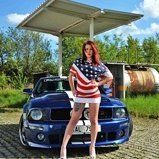
B-17G + all detail sets from Eduard
Martinnfb and one other reacted to Miloslav1956 for a topic
Last update.2 points -
Salute to Peter Castle (Airscale)
Phartycr0c and one other reacted to monthebiff for a topic
Peter's work is amazing and seeing No.80 at Telford was truly inspiring. His work has certainly made me think and stretch myself at times and try doing a few scratch built bits and pieces but he makes it look just so easy. The other aspect of his work that I love is when all of us mere mortals are posting replies to one of his updates saying how very fine it is and next thing we know he has ripped it all apart and done it all again as he was not quite 100% happy with his work. Long may he continue with the wonderful work he shows to us all. Regards. Andy2 points -

Short Sunderland MkII
kkarlsen and one other reacted to tomprobert for a topic
I know, I know... I’ve been sidetracked by my 1/48th B-52 project, and at the moment that is having to take priority due to the fact I’ve got a deadline to meet for a book. When the Buff is complete, the Sunderland will be back on the bench. Tom2 points -
My issue really isnt with the resin parts, and/or having to sand them down, that comes with the territory on all resin kits. Its the build methodology and the horrible, horrible mistakes that should have been taken care of at the factory, of the two (so far) HpH kits Ive built. That and the resin pool method that is unlike any other resin kit I've built. I'm not sure how many if any other HpH kits have similar issues, but if you have ever attempted the HpH Tiger cat at the very least it has big problems. And they aren't the type of problems that should come with any kit, resin or otherwise. Just plain stupid mistakes made in tooling and molding that should never have been there in the first place. Just take a gander through my F7F build thread, and you will see the many issues encountered, and anyone who has built resin kits in the past will know those are NOT the kind of things one finds in the average (or any) resin kit I know of. I can only hope their Me-410, La-7 dont have the same issues, but from what I have seen here, it appears the Tigercat may be the only one to have the major issues I speak of. I have the La-7 too, and will be building it. I would most certainly give any HpH IM kit a chance. It makes way, way more sense of financially workable for the company, and the likelihood of having to remove parts from a resin pool goes down substantially I would think with an IM kit (if resin parts are in fact included)2 points
-
Thanks John! Well, I plan on doing an armada of Spitfires and two or three will be built from the Tamiya kit which is too expensive for all Spits I'm planning to do. I really fear to tackle the Rvell Mk.II kit which will need raised rivets on the rear fuselage instead of simply filling those huge holes.2 points
-
A little work on landing gear last night. MRP medium sea grey, Molotov liquid chrome, with a little weathering from brown and black colors, followed by panel line wash. The tires are the kit parts, seam lines scraped and weathering completed with fine sanding stick. I think the tires look quite good, although hard to give a weighted appearance. A final dullcoat was given after these pictures were taken.2 points
-
its up on the ZM website jan and new base for Ki-452 points
-
Thanks gentlemen Made a resin copy of the main wheel with the tread and increased diameter. Aslo a picture to show the difference compared to the original size of the standard kit wheel. Cheers2 points
-
Is there a U.S. owner of the Trumpeter kit willing to "loan" me a set of forward pallets? Please send me a PM. TIA Update below... !2 points
-
The main problems are matching elements. This model is made straight from the box without resin parts.2 points
-
Thanks! I'm humbled. No one's ever used masterpiece in the same sentence as my models. Thank you very much. :) Paint is done. Now it's on to weathering proper. Once she's done, I'll take proper pictures, but for now, my phone will have to do.2 points
-
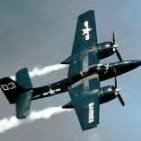
Wedding pics!
monthebiff and one other reacted to Out2gtcha for a topic
Thanks all! So far, as with our relationship pre wedding, we always seem to have fun, and the "team" aspect of the marriage so far is prevalent for sure, and I really enjoy it.2 points -
HPH F7F Tigercat
Rocat reacted to b757captain for a topic
Hiya fellas, I managed to finally finish the HPH Tigercat! I gotta say it looks pretty impressive sitting next to its WWII cousins. Photos and even being next to one in person doesn't do the Tigercat justice as to its size - it's a big airplane, especially siting next to a Spitfire or -109! Thoughts on the kit: There's lots in the box, tons of detail and multiple subassemblies. Not as intricate as the Helldiver I did last year but still plenty to do. Most of the cockpit detail can be seen, not as much in the main wheel wells, very little in the nose wheel well (more on that later), and most of the engine detail cannot be seen if cowled up. Parts fit is mostly good - for a resin kit - and surface detail is good throughout. Having read and followed Brian's build thread on this kit I was aware of some of the shortcomings in the main wheel wells and outer wing panel misalignment but that really didn't bother me so I pressed on . After looking at period photos of parked F7Fs I noticed that the nose gear doors are almost fully closed on the ground so most of the detail in the nose wheel well can't be seen, so I didn't spend too much time there. Just built up the subassembly as per the instructions. Main wheel wells are pretty complicated with lots of bulkheads to be added. These areas really beg for superdetailing but again I just stuck with the kit parts. Engines are gems and would look really good sitting on a stand, or with the cowls removed. The cockpit really shines, with lots of room to see all the goodies. General construction is pretty straightforward and with not too much cursing the fuselage and wings/nacelles will come together. I had read from the other build that the nose weights didn't fit well, but on mine they fit just fine. Some filler on the seams and rescribing of the lost panel lines (didn't go overboard on redoing the rivets). Note of caution here: It is a tail-sitter even with all the weight provided in the kit! I even drilled the trailing edge of the stab at the elevator joint to remove some material from the horizontal stab and it still plopped on the tail. Phooey! No need for the brass nose gear! Paint is MM Dark Sea Blue. I decided to forego any weathering aside from light exhaust staining though I did go with a semi-gloss clear coat to knock the shine down a little. Overall, I put the kit in the win column. There's a 1/32 Tigercat on the shelf, which was the goal! On to the pics: More pics to follow, Cheers, Mark1 point -

Wedding pics!
Out2gtcha reacted to thierry laurent for a topic
Congrats Brian. It looks like this was the perfect location for the event!!! If I ever go to the US, this is a place I would like to see.1 point -
1 point
-
1 point
-

Tempest Mk.V Special Hobby 1:32
Koralik reacted to Troy Molitor for a topic
Oh another awesome kit to look at. Love the exhaust staining. Well done. Love the pictures too... Thanks for sharing this with us. Troy1 point -
1/24 Airfix F6F-5 Hellcat
coogrfan reacted to Chad Veich for a topic
The Fighter Collection in the UK operated a -5 painted up as Vraciu's -3 up until very recently. There are thousands of photos to be found online including a number of good walkaround pictorials.1 point -
Nice project, Peter! I've just added you to this month's raffle draw. Kev1 point
-

Mclaren MP4-23 1/12
mark31 reacted to 32scalelover for a topic
That is really cool. I have built several 1/12 Tamiya F1 cars, but never even heard of this company. Is the front wing white metal or aluminum? It is really polishing up well. I looked online to find out more about these and saw how expensive they were. WOW!! Do they fit together fairly well, and do they have good clear instructions? Greg1 point -

SB2C
scvrobeson reacted to thierry laurent for a topic
I will get one and hope it will have markings for an Helldiver from the Aeronavale based in Indochina! Otherwise, hopefully Berna will plug the gap!1 point -
E-mail: lajer@aires.cz1 point
-
It's been slower progress on the build for the past week or so after I finished the cockpit, although we're moving along. For the past couple of days, I've been laboring in the world of "why am I doing all of this nobody's ever going to see it!" with the Eduard PE set. I must say, though, having completed it (without losing a single tiny part - a first for me!) it is satisfying. The enjoyment of modelling for me is the process at least as much as the finished product. PE addons to the main landing gear and radiator fairings (chiseling off the "L" on the left part was more for practice with a new tool - discussed more below) I had a glue misadventure, unfortunately, while attaching the gun cover panels, and had to do a little rescribing, re-riveting, and sanding. I sprayed a coat of black primer to see how my work looked. I decided to wipe it back off so I would have an even surface for final paint, so I sprayed it down with IPA and wiped it off. This inadvertently gave me a panel line wash/preshading effect, which also gave me a really good look at where my scribing was and wasn't adequate. Starboard wing got the worst of the glue trauma, and unfortunately lost a few of those beautifully fine raised fasteners, as you can clearly see here. In other exciting news, though, my backordered Yahu panel finally arrived, so I was able to do this: Followed by this: Unfortunately, I did something wrong with that landing/ID light that is sandwiched between the fuselage halves, and ended up with about 1mm x 5mm gap along the bottom of the fuselage, which I filled with thick CA glue. I take issue with that light, actually, as well as the one that they ask you to delete in the instructions. Both are, I think, contrary to Tamiya's usual elegant process. The one involves trying to cut out a perfect half circle from the bottom of the fuselage half, and the other involves removing a prominently molded piece of detail from the middle of the wing section, which includes both raised and engraved detail. I'm leaning towards being inaccurate and leaving that as is, because I think the likelihood of my messing up the beautiful detail in surrounding areas is great. I also wanted to take a minute to praise a couple of new tools that I'm using during this build. The first is this micro chisel I got from UMM: http://umm-usa.com/onlinestore/product_info.php?cPath=21_28&products_id=7431. It's a very precise and beautifully (even dangerously) sharp tool, and I've found several good uses for it already. Highly recommended. I also am trying Gator's Grip for the first time. It is a nice thick PVA glue that dries quite fast and strong. I've used it as well as CA for my PE in this project, depending on the particulars, and found it very useful. FInally, these little guys retail for 8.99 at Harbor Freight, and I got them on sale for 5. The 1/8 shank means that they can be used in my Dremel, but it also happens to be a perfect size for using them as hand drills as well. These have already been very handy, and I'm sure will continue to be.1 point
-
1/24 Airfix F6F-5 Hellcat
Out2gtcha reacted to Markjames1968 for a topic
Laziness and lack of time as im on holiday prompts this question , are there any CUrRENT restored f5fs flying around that are f3f markings as a tribute to a particular pilot or aircraft? That would be enough ‘evidence’ for me to do a 3 tone machine if you see what i mean...1 point -
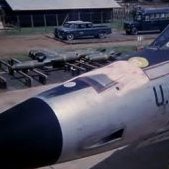
1/48th Boeing B-52H Stratofortress
LSP_Paul reacted to marauderdriver for a topic
the ECM antenna is different than your model also.1 point -

1/48th Boeing B-52H Stratofortress
LSP_Paul reacted to marauderdriver for a topic
@tomprobert This is the damaged area of the one Ghost Rider replaced. 49th Operational Test Squadron1 point -

1/48th Boeing B-52H Stratofortress
LSP_Paul reacted to tomprobert for a topic
@marauderdriver those pics are epic! Ghost Rider sure would make an interesting model if I was to paint it as in your pictures - would certainly bring a bit of life to an otherwise rather drab all-grey scheme... I also see the ‘bump’ on the top of the nose radome immediately in front of the windscreen is absent on current Buffs - at least that’ll save me some scratch work if I go for a post-2018 airframe. Thanks for sharing.1 point -
1 point
-
I have Mr Parker’s guide to modelling the HK 1/32 B-17G. The guide in my opinion is excellent, lavishly illustrated and his scratch building details namely the top turret , ( prior to the B-17 E-F release) are exceptional and consistently so. The interior colour is the only area where there may be some doubt, and as other’s have pointed out , is almost always natural metal -alclad. I say almost because fuselages etc were cannibalised from other forts which may have been finished in interior green as they came off the production line before the interior paint finish was cancelled....mid 1943? I forget the exact date. Roger Freeman’s excellent book on the Fortress provides all the modifications and dates as they were implemented. The interior ( B-17G)was left natural metal, as was the outside which had an advantage of saving weight, hence a slightly faster true airspeed, plus saving of production time and costs. In reality, the other more sobering reason was simply due to the aircraft not lasting long enough in combat for there to be any corrosion concerns. Of curious note in Mr Freeman’s book is the surprising mod of pouring concrete into the top turret mounting pintle to prevent turret fires caused by electrical wire chaffing as the turret rotated. As ever, check your references, there is plenty of contemporary photographic evidence showing the natural metal finish interiors. The cockpit area is the exception which shows the deep green colour ( not US interior green). If you can find Mr Parker’s guide to building the B-17G, I still thoroughly recommend it. p-t1 point







